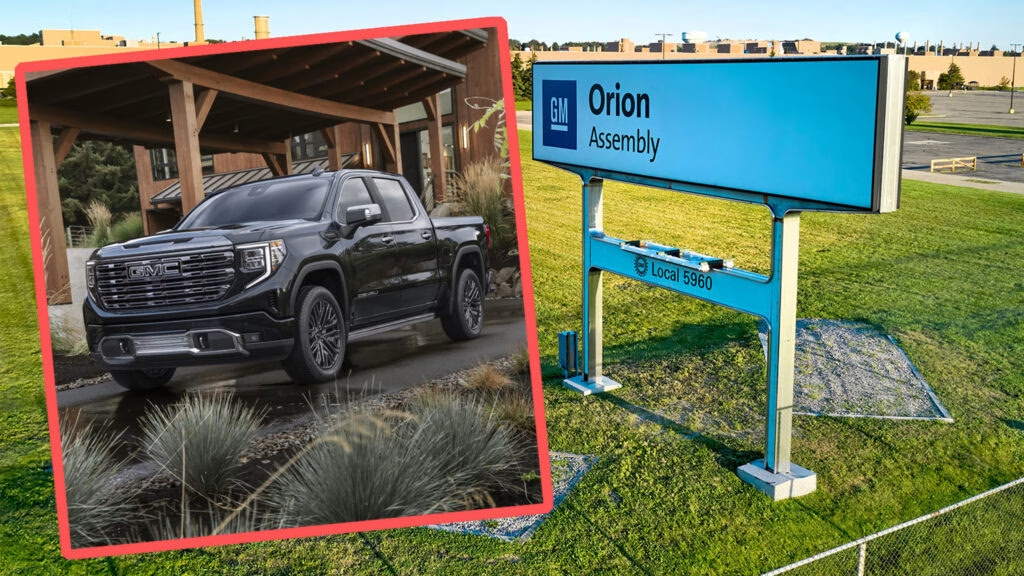Why Did GM Change Course on Its Orion EV Plant?
GM’s Orion Assembly plant was supposed to be the company’s electric vehicle crown jewel. The plan? Invest $4 billion, leverage $480 million in state grants, and churn out electric Chevrolet Silverado and GMC Sierra pickups for a new era. But that vision just hit a major speed bump. Instead of building EVs, Orion will pivot to producing three of GM’s most iconic gas-powered vehicles: the Cadillac Escalade, Chevrolet Silverado, and GMC Sierra—starting in 2027.
So, what happened? In short, Americans aren’t buying electric pickups in the numbers GM hoped for. According to recent industry data, EV pickup sales have lagged far behind projections, with some models seeing sales drop by as much as 50% year-over-year. Consumers cite concerns about range, charging infrastructure, and price as key reasons for holding back. GM’s leadership saw the writing on the wall: to keep Orion humming and workers employed, they needed to build what people actually want right now—big, powerful trucks and SUVs.
What Does This Mean for Michigan’s Economy and Jobs?
For Michigan, the news is a mixed bag—though mostly positive if you’re focused on jobs. The Orion plant’s future was uncertain as EV demand faltered, but this pivot means hundreds, possibly thousands, of jobs are secure for years to come. GM’s spokesperson emphasized the company’s commitment to Michigan, noting that shifting production to Orion will help meet “continued strong customer demand” and strengthen GM’s manufacturing footprint in the state.
It’s worth noting that the $480 million in state grants were originally tied to EV production. Yet, the Michigan Economic Development Corp (MEDC) has confirmed GM remains in compliance with its incentive agreements. Why? Because the core goal—job creation and investment in Michigan—remains intact, regardless of whether the vehicles are electric or gas-powered. For local communities, that’s a win, even if it’s not quite the green revolution many envisioned.
How Will This Affect GM’s Broader EV Strategy?
GM’s about-face at Orion doesn’t mean the company is abandoning EVs altogether. Far from it. The automaker is still investing heavily in battery technology, EV platforms, and other assembly plants focused on electrification. But the Orion decision is a clear signal that GM is willing to adapt its strategy based on real-world demand, not just boardroom optimism.
This isn’t unique to GM. Across the industry, automakers are recalibrating their EV rollouts. Recent reports show that even major players like Kia and Mercedes have seen EV sales halve in the past year, pushing companies to rethink production plans and timelines. The lesson? The shift to electric vehicles is more marathon than sprint, and flexibility is key.
Will Orion’s Gas-Powered Production Impact Other GM Plants?
Here’s an important detail: Orion’s new production lines for the Escalade, Silverado, and Sierra will supplement—not replace—existing output at other GM plants. The Escalade will still be built in Arlington, Texas, alongside the Tahoe and Suburban. Silverado and Sierra production will continue at Fort Wayne, Indiana, as well as in Mexico and Canada. Orion’s role is to add capacity, helping GM meet robust demand for these high-margin vehicles.
This approach also gives GM breathing room to adjust as market conditions evolve. If EV demand rebounds, Orion could theoretically pivot again, especially since much of the plant’s recent investment was aimed at flexible, future-ready manufacturing.
What’s Next for the American Auto Industry’s EV Ambitions?
The Orion story is a microcosm of the broader EV transition in the U.S. Ambitious goals, big investments, and plenty of government support—all colliding with the reality of consumer preferences and economic headwinds. It’s not a failure, but a recalibration.
For buyers, this means more choices—both electric and gas-powered—will be available for the foreseeable future. For workers and local economies, it means stability and continued investment, even if the vehicles rolling off the line aren’t as green as once hoped. And for GM, it’s a reminder that agility and pragmatism often trump idealism in the auto business.
The big takeaway? The EV revolution isn’t about perfection—it’s about smarter adjustments. Start with one change this week, and you’ll likely spot the difference by month’s end.

